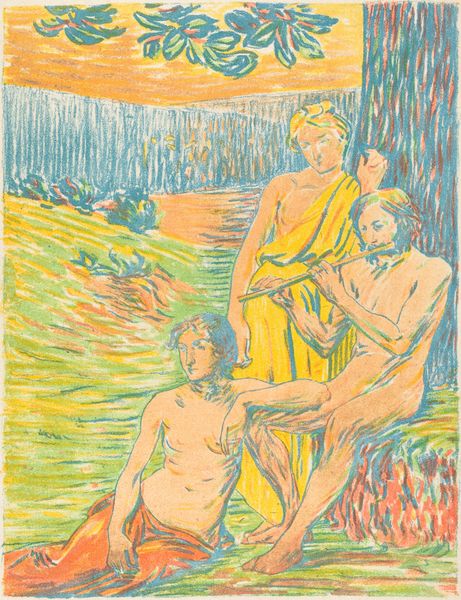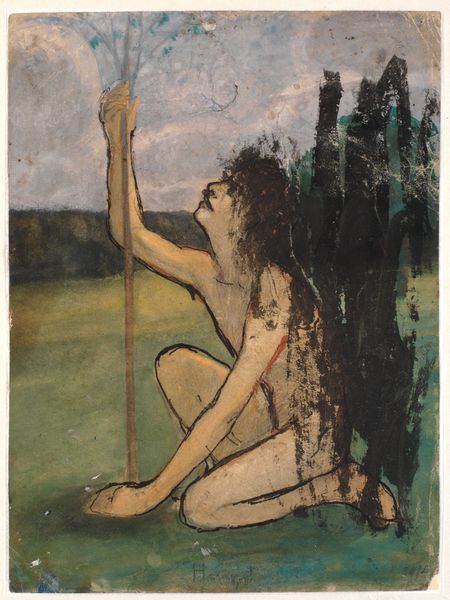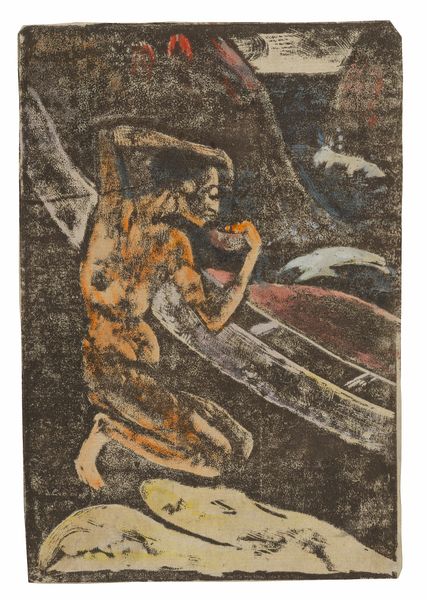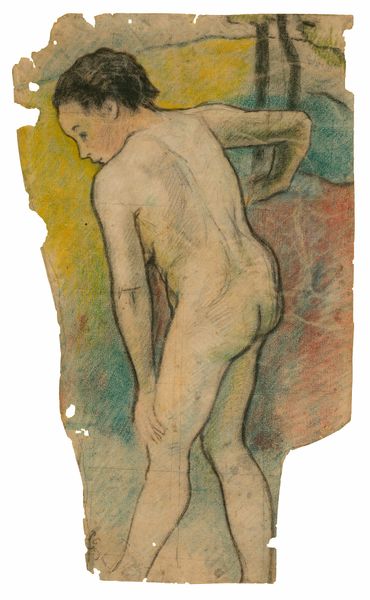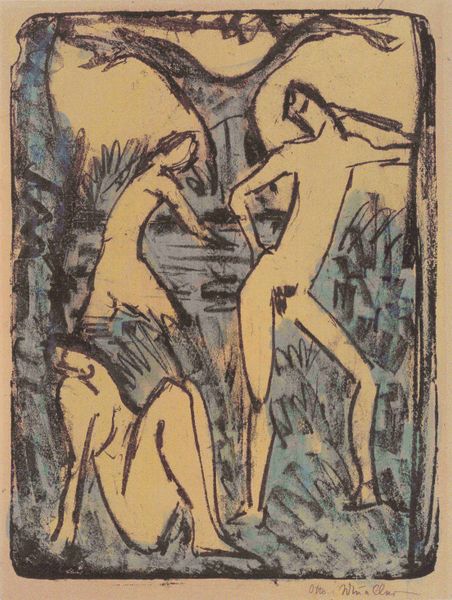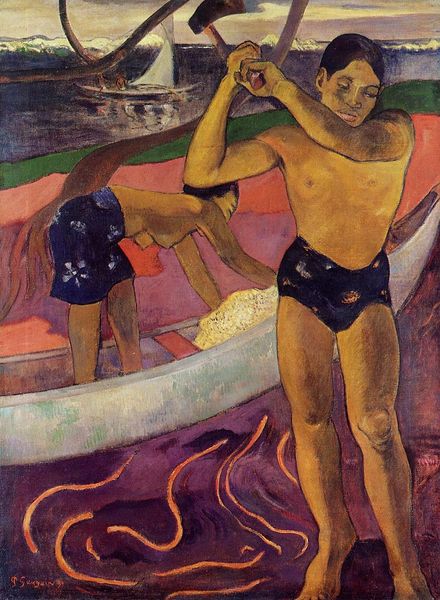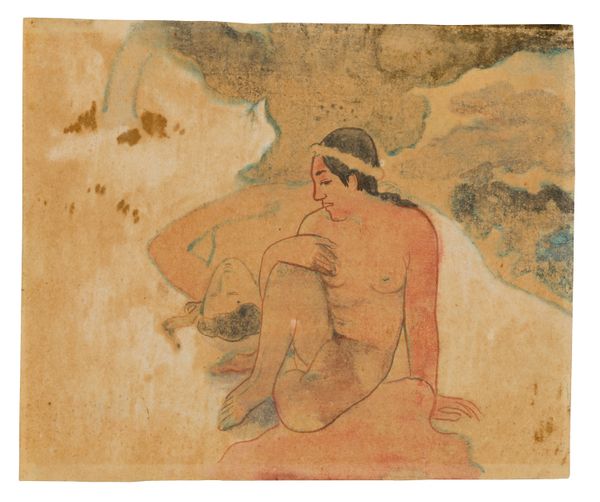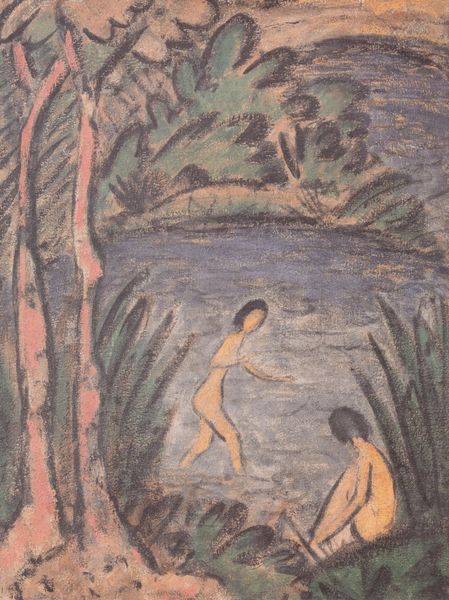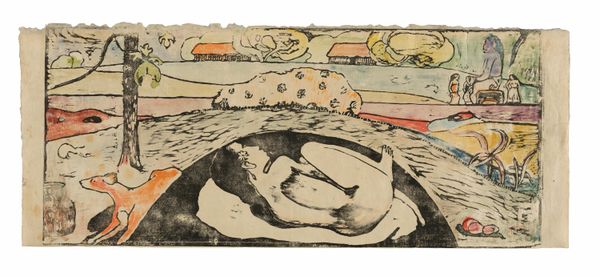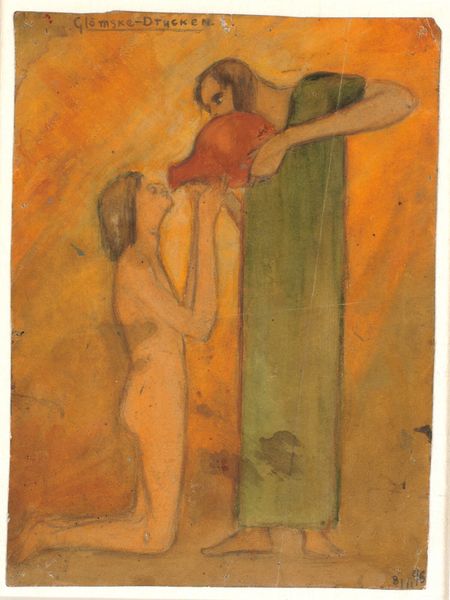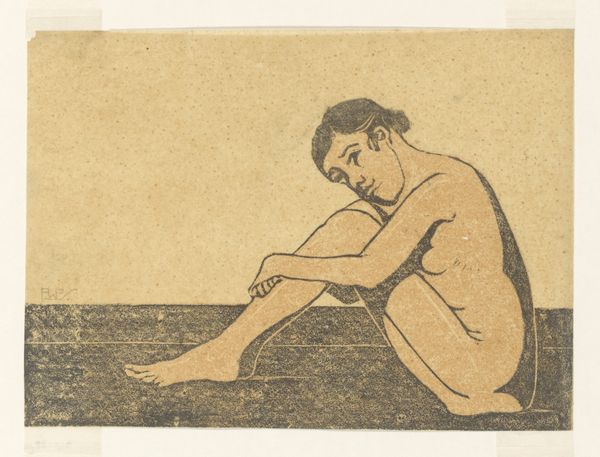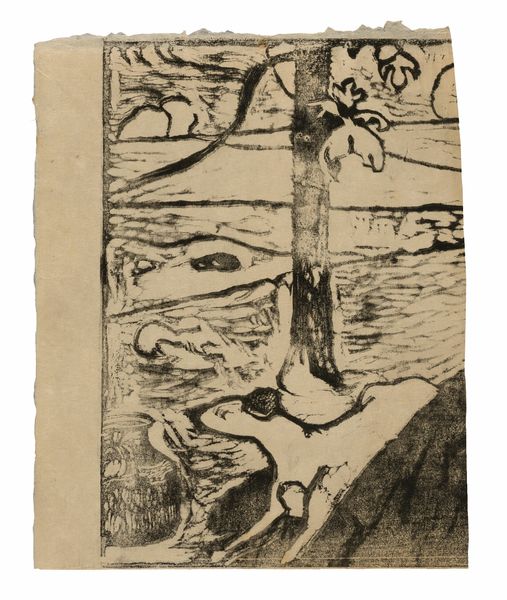
Dimensions: 317 × 228 mm (image/primary/secondary support)
Copyright: Public Domain
Paul Gauguin created 'Man with an Ax' using watercolor and charcoal on paper. Gauguin, like many artists of his time, sought refuge from what he perceived as the superficiality of Western society, turning towards non-Western cultures. In this piece, we see a Tahitian man rendered through Gauguin's gaze. The man, caught in the act of labor, becomes an emblem of the artist's vision of an unspoiled, idyllic existence, free from the constraints of European industrial life. Yet, we must ask, what is lost in this projection? Whose story remains untold? While Gauguin claimed he wanted to represent an authentic vision of Polynesian life, his work often exoticized and simplified the lived realities of Tahitian people. It is important to consider how these images both reflect and influence the colonial narratives that were being constructed at the time. Gauguin's work invites us to reflect on the complexities of cultural exchange and the ethics of representation.
Comments
No comments
Be the first to comment and join the conversation on the ultimate creative platform.
